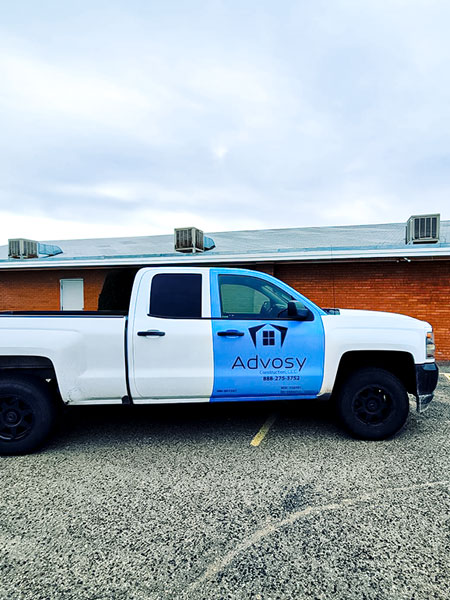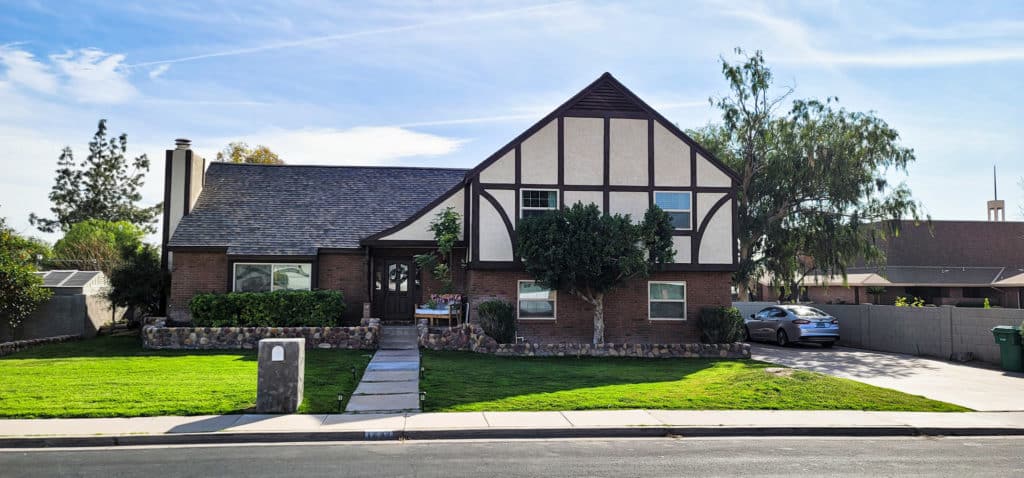Flat roofing systems are becoming increasingly popular for residential and commercial buildings. It is a cost-effective and durable solution that has the potential to last for decades with proper maintenance and care. Understanding the basics of flat roofing systems can help ensure an effective installation and provide long term satisfaction.
This article will provide readers with an overview on the various types of flat roof structures, materials used in construction, installation methods, benefits of flat roofs, common issues associated with them, as well as tips on how to maintain and extend their lifespan.
Through this comprehensive guide on understanding the basics of flat roofing systems, readers will be better equipped to make informed decisions when choosing a system for their home or business.
Types Of Flat Roof Structures
Flat roofing systems are a popular choice for many residential and commercial buildings due to their low cost, ease of installation, and versatility.
There are several types of flat roofs available on the market today; these include built-up roofs (BURs), modified bitumen membranes (MBMs), single-ply membranes such as ethylene propylene diene terpolymer (EPDM) or thermoplastic polyolefin (TPO).
BURs consist of multiple layers of asphalt felt that is saturated in bitumen and covered with an additional layer of gravel or mineral granules.
MBMs are composed of two layers bonded together by heat or adhesive, which can be reinforced with fiberglass matting.
EPDM and TPO offer greater flexibility than other materials since they come in large rolls that need only minimal preparation before being applied directly onto the roof deck.
All flat roofing systems should be professionally installed to ensure proper drainage and avoid any safety hazards from water or debris buildup.
Additionally, periodic maintenance will help extend the life of your roof system and protect against potential damage over time.
Materials Used In Construction
Flat roofing systems are typically constructed with a variety of materials, each having its own advantages and disadvantages.
Asphalt is commonly used for flat roofs due to its availability and relatively low cost. It offers good protection against rain, strong winds, and UV radiation. However, it is prone to cracking over time as the asphalt wears away.
Built-up roof (BUR) membranes are composed of alternating layers of tar paper and bitumen that have been hot mopped together creating an effective waterproof barrier. BURs offer superior weathering resistance compared to asphalt but require more time and skill to install correctly. In addition, they may be susceptible to punctures from debris or objects on the roof which can lead to water seepage or other damage.
When deciding between these two options for a flat roof installation, one should consider all aspects including cost, durability, ease of installation, maintenance requirements, local climate conditions, and any specific needs related to the structure in question.
Ultimately this decision will depend on individual preferences combined with professional advice from experienced contractors or other sources such as building code regulations or warranty requirements.

Installation Methods
Flat roofing systems are an effective solution for many buildings and structures. These roofs typically require a different installation process than a typical pitched or sloped roof. When installing flat roofs, it is important to ensure the surface is even and level prior to beginning the project. Additionally, the type of material being used will have an impact on which method should be chosen.
One popular installation method for flat roofs is known as ‘hot mopping’. This technique involves using molten asphalt that has been heated up in order to create a waterproof layer atop the roof deck. The hot asphalt is then spread across the roof with a mop before additional layers of felt paper are laid down over top. Additional coatings such as reflective paint may also be added at this point if desired by the customer. An advantage of this approach is its reliability and durability; however, due to potential fire hazards associated with working with molten materials, proper safety precautions must always be taken when performing these types of jobs.
Another common way to install flat roofs is through mechanically attaching pre-formed metal panels directly onto the structural members below them. Although more expensive than some other methods, this provides superior overall strength and stability compared to traditional hot mopping techniques.
Furthermore, metal panel installations can often last upwards of twenty years depending on environmental conditions such as humidity and wind speed relative to their location. Therefore, regardless of whether one chooses hot mopping or mechanical attachment for their flat roofing system, they can rest assured knowing that both approaches offer reliable performance over time while ensuring maximum protection from outside elements like rain and snowfall.
Benefits Of Flat Roofs
Flat roofs offer numerous advantages when compared to traditional pitched roof designs. Installation of a flat roof is simpler and less labor intensive than the installation of a sloped roofing system, making it both cost-effective and efficient.
Flat rooftops also take up less space, allowing architects more freedom when designing buildings that require low profile structures or those in which height restrictions are applicable.
The materials used for flat roof systems can be easily replaced or repaired if needed, reducing long-term maintenance costs substantially. Additionally, the waterproof membrane on these types of roofs provides an extra layer of protection from potential water damage.
Aesthetically speaking, flat roofs provide endless design possibilities due to their versatility and simplicity; they can even act as walkable terraces with the addition of decking material such as wood or concrete pavers over a rubberized membrane base.
Furthermore, some commercial building owners prefer having a flat rooftop because large HVAC units can be installed without obstructing views or taking away usable space within the structure itself – something not possible with angled roofs.
As an added bonus, depending on where you live, certain local regulations may allow you to install solar panels onto your flat roof for additional savings on energy bills too!
Common Issues With Flat Roofs
Flat roofs, despite their name, do not always remain perfectly flat. Over time, movement caused by wind or other external factors can cause the roof to become warped and uneven in some areas. This is known as ‘ponding’ and it can create a number of issues for the building owner if left unchecked.
Additionally, improper installation may result in water leaking through seams that have been sealed incorrectly or without adequate waterproofing materials. Regular preventative maintenance is essential for ensuring any potential problems are identified early on before they can start causing damage to the structure itself.
Prolonged exposure to sunlight also has an effect on flat roofs; UV rays degrade many types of commercial roofing material over time reducing its effectiveness at keeping out moisture. Furthermore, debris such as dirt and leaves tend to build up on top of these kinds of roofs leading to blocked drains and further accumulation of standing water which exacerbates the problem even more significantly.
Ultimately, it is important to address any underlying issues with a flat roof promptly so they do not compromise its integrity down the line.
Tips For Maintaining Flat Roofs
Flat roofs are often chosen for their practicality and cost efficiency, but they do require regular maintenance to ensure longevity. Common issues such as ponding water, cracks, or poor drainage can all cause problems which should be addressed right away in order to prevent further damage.
It is important that property owners take the time to properly maintain their flat roof systems in order to achieve long-term performance. A proactive approach towards preventive maintenance of a flat roof system is key. Inspections should occur regularly, at least twice per year to identify any potential issues before they become serious concerns.
Regularly cleaning gutters and downspouts also helps with proper drainage on flat roofs. Additionally, having a professional inspect the roof membrane periodically will help detect small tears or punctures early on so they can be repaired quickly and avoid costly replacements later on.
Property owners should make sure that any repairs done by an experienced contractor use compatible materials to match the existing roof system in order to guarantee seamless integration of new components into the existing structure and ensure its durability over time. Taking care of minor problems now will save significant costs down the line and extend the life expectancy of your flat roof system significantly!

Extending The Lifespan Of Flat Roofs
Flat roofs are a popular choice for many commercial and residential buildings. They can be cost-effective, relatively simple to install and maintain, and provide good protection from the elements. However, they do need some extra care in order to maximize their lifespan.
This article will discuss several strategies that property owners can use to help extend the life of their flat roofing system.
Proper maintenance is key when it comes to extending a flat roof’s lifespan. Regular inspections should be carried out by an experienced professional who has knowledge of flat roofs so any issues can be identified early on before they become worse or cause further damage.
It is also important to promptly remove debris such as leaves or branches which could clog drains and gutters and cause water accumulation on the roof surface, leading to leaks and other problems down the line. Additionally, keeping up with repairs when needed will ensure that small issues don’t turn into bigger ones over time.
By implementing these practices, property owners can protect their investment while ensuring that their flat roof provides them with years of service without too much hassle or expense. With proper attention paid to regular maintenance, inspection, and timely repairs, property owners can rest assured that their flat roof won’t let them down anytime soon.
Conclusion
Flat roofing systems offer a variety of benefits for building owners, such as the ability to install large rooftop structures and improved energy efficiency. However, flat roofs are also prone to certain issues due to their design.
In order to ensure that a flat roof performs optimally over its lifespan, it is important to understand the different types of materials used in construction, installation methods, common problems, and maintenance tips. By understanding these basics of flat roofing systems, building owners can extend the life of their flat roofs while enjoying all the benefits they have to offer.
Proper care and maintenance will help protect against any potential damage or wear that could occur over time. With regular inspections and repairs where necessary, building owners can enjoy many years of reliable performance from their flat roofs.


